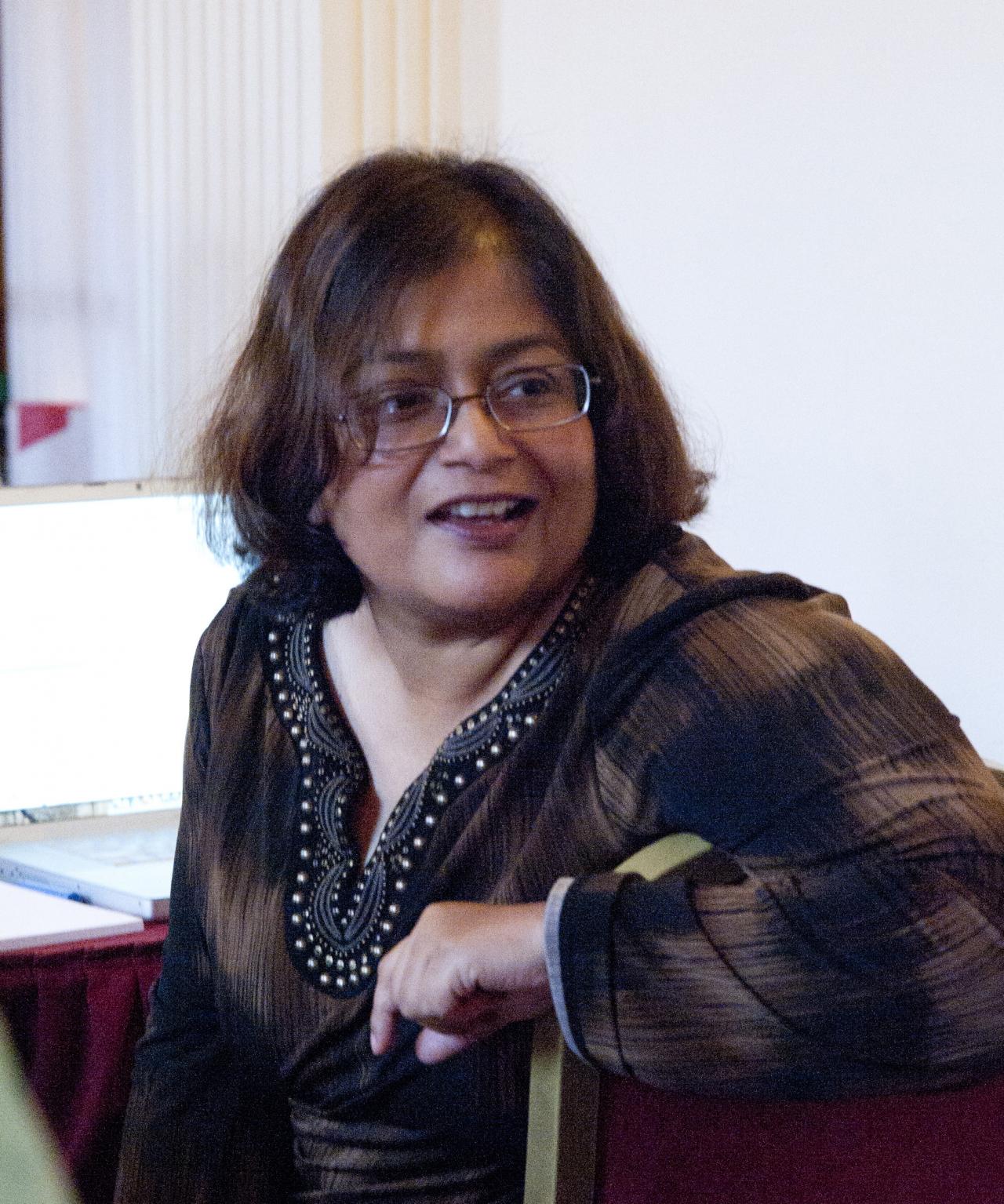Sarbani Basu specializes in Helioseismology. In her research she aims to determine, by studying oscillation, the internal structure and dynamics of the Sun and how these characteristics change with solar activity. She is also active in studying other stars, mainly using asteroseismological data obtained by Kepler. A member of the steering committee of KASC (Kepler Asteroseismic Science Consortium), she heads this international consortium's working group on star clusters and also participates in the modelling of solar-type stars. Likewise, she is interested in the use of seismology in studying the properties of stellar matter. She began her scientific career in India and continued her research in England, Denmark and the United States, where she is at present professor at Yale University.
How can using Asteroseismology to study the stars drive progress in and even revolutionise Astrophysics?
Asteroseismology is the only means available with which we can probe the interior of stars. Asteroseismic techniques allow us to study the internal structure, physical processes and state of evolution of stars for which we have seismic data.
Non-seismic observations only tell us about the global properties of a star (such as the surface temperature and the total amount of energy produced), and deductions of the interior depend completely on models. This of course, means that if our models are incorrect, our deductions will be incorrect too. Asteroseismology gives us the means to make model-independent deductions about stellar structure.
It should be noted that Asteroseismology is currently the only means available by which we can measure the masses of stars that are not in binaries.
How does work on star clusters help our understanding of individual stars?
Star clusters are a good place to test our theories of stellar structure and evolution. Stars of different masses evolve at different rates. But all stars in a cluster have the same age and composition, and hence, the detailed structure of the stars, particularly that derived using Asteroseismology, will pose challenges to stellar evolution theory. Thus cluster stars can be used to refine the theory of stellar evolution, which in turn will help our understanding of individual stars.
Seismic studies of the Sun and other stars are helping us to understand the properties of stellar matter. Can you tell us how?
Helio- and Asteroseismology allow us to calibrate our models and determine which inputs to our models allow us to explain the data better. Stellar evolution calculations require a lot of external inputs, such as nuclear reaction rates, radiative opacities, the equation of state, etc., that essentially define the properties of stellar material under different conditions of pressure and temperature. These functions determine the structure of the models and govern their evolution. These inputs are usually calculated theoretically since we cannot re-create stellar conditions in a laboratory. Seismology allows us to determine whether or not these inputs are consistent with the data. If they are, we can accept the inputs as reasonably representing properties of stellar matter, if not, we have to recalculate.
Could it be possible to learn as much about the interior of other stars as we have about the interior of the Sun?
That is unlikely. Since we can see details on the solar surface, we can get data on solar oscillations on small spatial scales. We cannot see details of the surface of other stars, and many modes of oscillation become undetectable. This reduces the amount of data we can get for other stars. For the Sun we have detected oscillations that probe the solar core, as well as those that detect the very shallow layers; for other stars we can only detect oscillations that probe the core. However, we can study the Sun in only one point in time. Other stars will allow us to study how stars change as a function of age. Thus although we will not get enough data to study any one star to the extent we have studied Sun, the stars studied as an ensemble will teach us a lot more about different stages of a star's life.
How do the Sun's internal structures and dynamics change with solar activity?
Solar dynamics changes dramatically during the solar cycle. Changes are predominantly seen in the zonal flows (these are bands of prograde and retrograde flows on the Sun parallel to the equator) as well as in the meridional flows (these are from the equator to the poles). The banded structure of the zonal flows changes as the solar cycle progresses. The low- and mid-latitude bands move towards the equator, while the high latitude band moves towards the poles. A hallmark of the peculiarity of the current solar cycle is that the pole-ward migration has not been seen yet. The meridional flow appears to become slower as the Sun becomes more active. The latitudinal structure shows small changes too.
Changes in solar structure are much more subtle and more difficult to detect. Most of the changes appear to be concentrated in the very shallow layers of the Sun. These changes are still being studied. There is also evidence that there are changes at the base of the solar convection zone. This is the layer where we expect the solar dynamo that drives the solar cycle to exist.
What is actually happening when the Sun's interior seems unchanged but sunspots disappear from its surface?
We are still trying to find the answer to this question! It is likely that the magnetic fields that are causing the sunspots on the surface are swept away by the flows into the solar interior to be recycled, but we do not know how correct this scenario is.
XXII Canary Islands Winter School of Astrophysics
Annia Domènech
